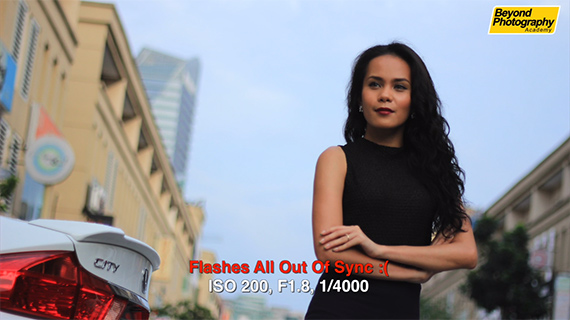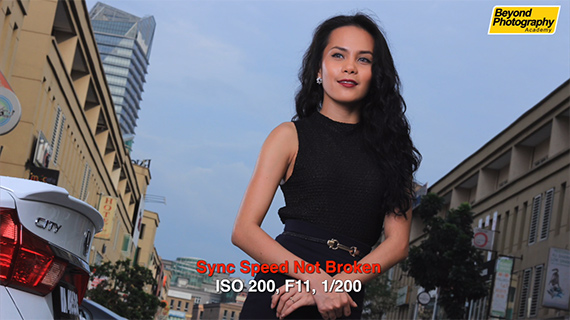The sync-speed limitation on modern DSLRs has remained a bane on the use of strobes at high shutter speeds. On most cameras, the fastest shutter speed at which you can sync with a flash is 1/250 or 1/200 of a second. Anything faster and you get the dreaded black bars in your images. Thankfully, there is a cheat which enables you to break that barrier. Andrew Boey shows how:
High Speed Sync Technique
The technique that Boey demonstrates is known as high speed sync. To demonstrate this technique Boey used simple tools: a Canon 60D APS-C DSLR, a Canon 50mm f/1.8 II prime lens, and a main strobe light diffused and mounted on a stand. He also used a second light with a beauty dish, which functioned as a rim light.
The secret to the setup is the external optical trigger that Boey used with both the studio lights. The external optical trigger caught the light from a Canon 320EX flash attached to his camera and in turn triggered the strobe it connected to.
With the camera set to ISO 200, f/1.8, and 1/4000 of a second, he set the flash settings to External Flash and the flash mode to Manual. The flash output was set to maximum and shutter sync to hi-speed. Both the studio lights were also set to full power.
How to Shoot a Photo with High Speed Sync
Boey aimed the external flash (mounted on the camera) toward the optical light trigger on the key light:

Sync-speed broken with high-speed sync
As you can see, the sync-speed was broken. The subtle rim light shows up in the image as does the shadow under the left chin which is produced by the key light.
Using a Radio Trigger
For the second experiment, Boey attempted to break the sync speed barrier using a radio-trigger. His settings remained the same, as did all the equipment, except in this case he used radio triggers instead of optical triggers:

Sync-speed is not broken with the radio trigger
This time, the sync speed barrier was not broken. It appears that radio triggers are not fast enough for this technique. Just to prove it, Boey dialed down the shutter speed to 1/200 for the next shot with the radio trigger:

The effect of the studio lights visible when shutter speed is dialed down to 1/200
This technique of breaking the sync speed is a must-know for all photographers, regardless of the gear they use. It can make or break a photo shoot.
Like This Article?
Don't Miss The Next One!
Join over 100,000 photographers of all experience levels who receive our free photography tips and articles to stay current:






Leave a Reply